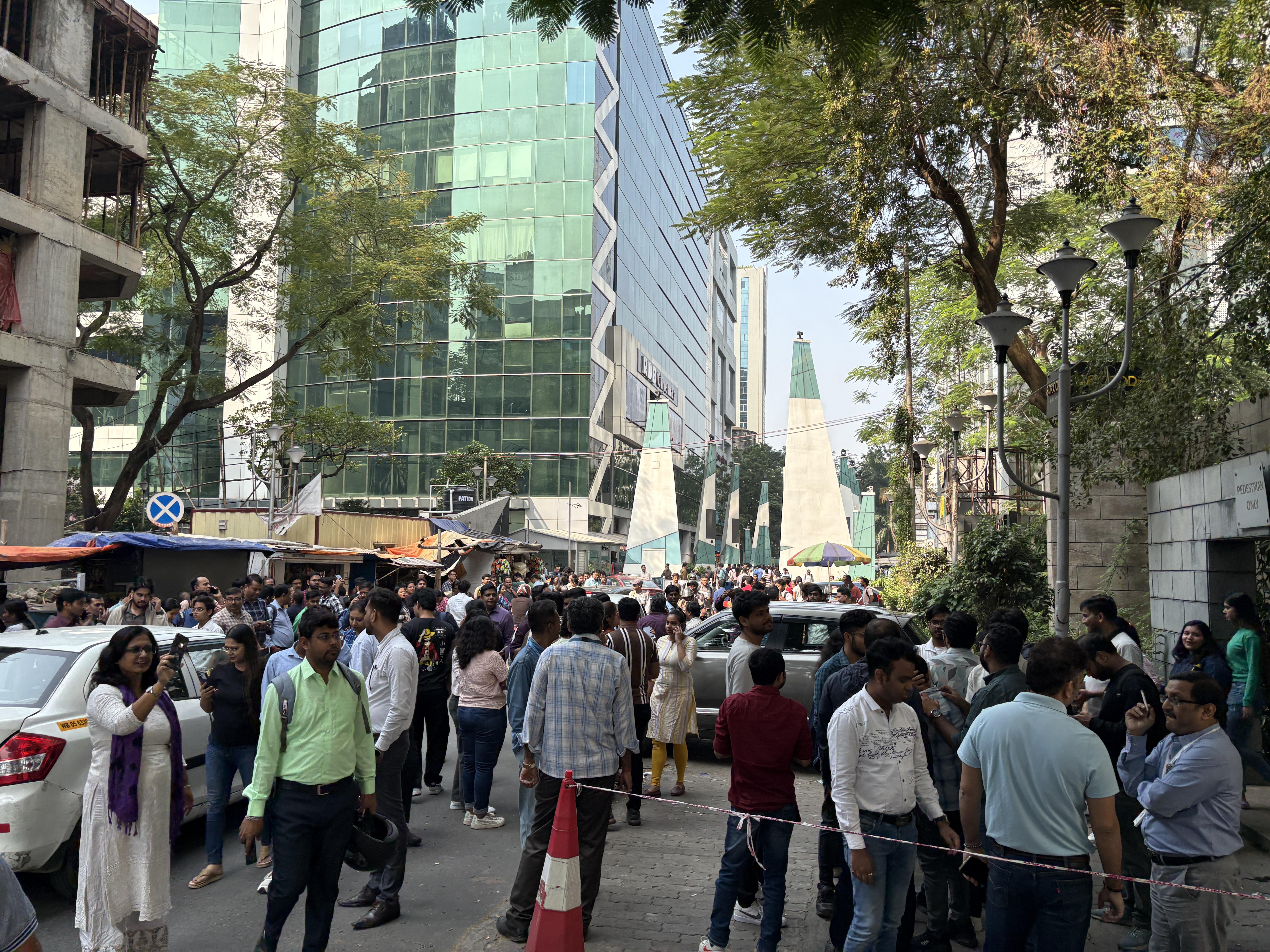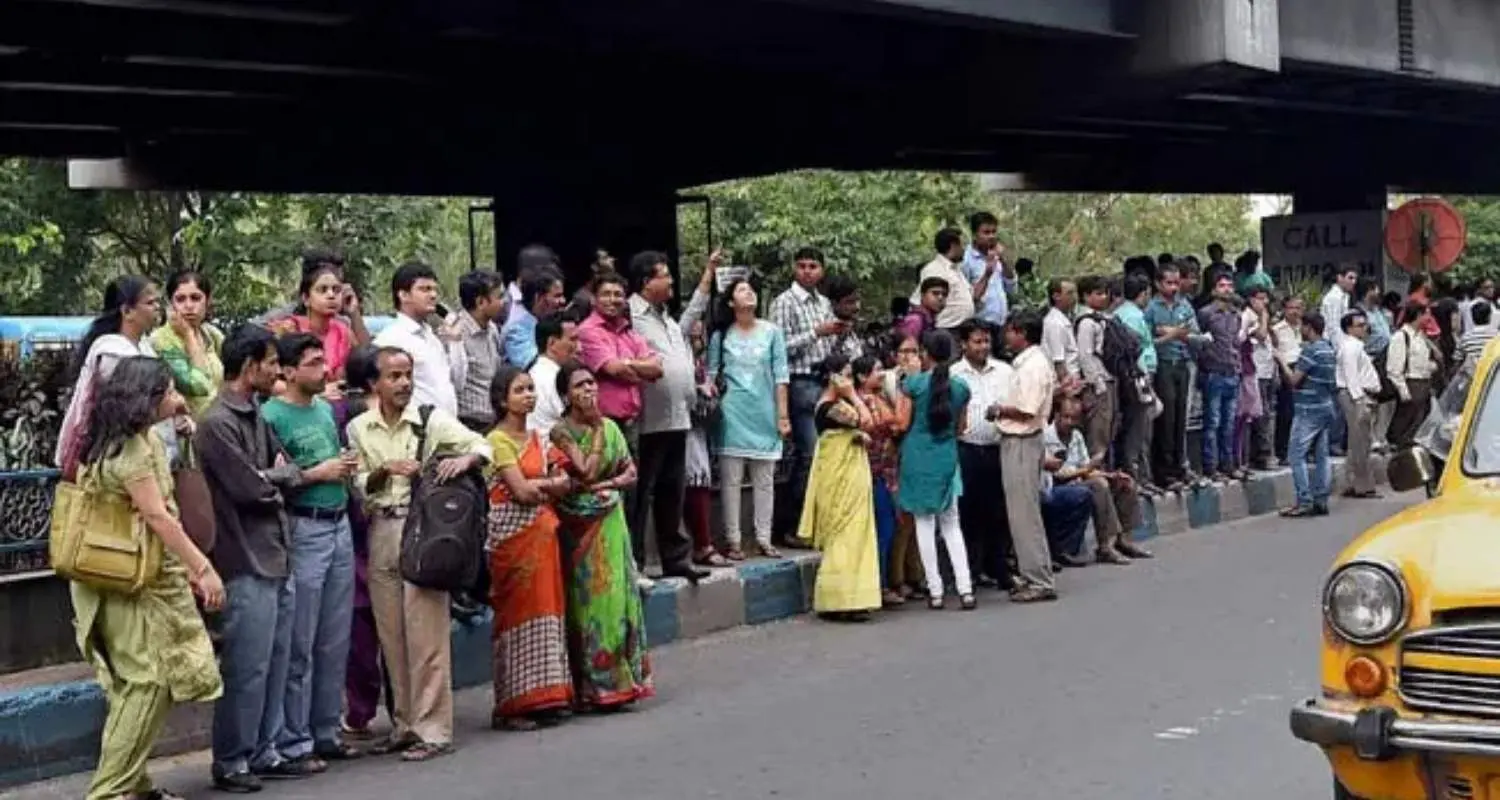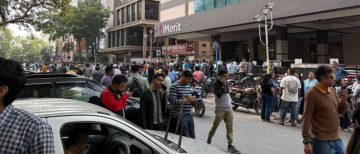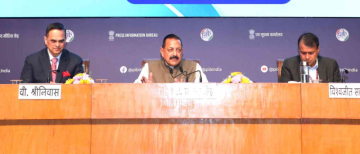Wide portions of eastern and northeastern India were shaken on Friday morning after a series of moderate earthquakes struck Bangladesh near its capital, Dhaka. The tremors, which rattled Kolkata, West Bengal districts, and several northeastern states, triggered moments of panic as people rushed out of homes and offices. According to early readings from global and national seismic monitoring agencies, the earthquakes measured between 5.5 and 5.7 in magnitude, with their epicentres located close to Narsingdi, roughly 50 km from Dhaka, at a shallow depth of 10 km.
The US Geological Survey (USGS) first reported a 5.5-magnitude quake, while the National Center for Seismology (NCS) and the European-Mediterranean Seismological Centre (EMSC) recorded a 5.7-magnitude event occurring around 10:08 am (IST). Despite the widespread tremors, no reports of injuries, casualties, or structural damage have emerged so far from either Bangladesh or India.
Yet the tremors—felt sharply in Kolkata, the districts of Dakshin and Uttar Dinajpur, Cooch Behar, and across states such as Meghalaya, Mizoram, and Tripura—served as a stark reminder of the region’s growing vulnerability to seismic disturbances.

A Region on the Edge: Why Bangladesh and Northeast India Are So Seismically Active
Bangladesh, Northeast India, and adjoining South Asian nations lie in one of the most geologically restless belts on Earth. This zone marks the collision boundary between the Indian Plate and the Eurasian Plate, where massive tectonic pressure continuously accumulates beneath the surface.
Bangladesh’s geographical positioning makes it especially vulnerable because it sits at the junction of three major tectonic plates:
-
Indian Plate – moving northeast at approximately 6 cm per year
-
Eurasian Plate – drifting north at around 2 cm per year
-
Burma Plate, creating additional instability on the country’s eastern flank
The nation is also intersected by several high-risk fault lines including:
-
Bogura Fault
-
Tripura Fault
-
Dauki Fault
-
Assam Fault
-
Shillong Plateau fault system
These fault systems divide Bangladesh into 13 earthquake-prone zones, where the risk of moderate to strong tremors remains persistent. High-vulnerability regions include Chattogram, the Chattogram Hill Tracts, and Jaintiapur in Sylhet.
Dhaka, with a staggering population density of over 30,000 people per sq km, is consistently ranked among the world’s 20 most earthquake-vulnerable cities, as reported by The Daily Star. The combination of unplanned growth, dense habitation, and ageing infrastructure increases the danger multiple fold.
The states of Northeast India also fall squarely into this seismic hotspot, with cities like Shillong, Guwahati, and Agartala routinely experiencing tremors from regional tectonic activity. Historically, the region has recorded some of the strongest earthquakes in the Indian subcontinent.

Earthquake Triggers Panic in Kolkata: Residents Rush Outdoors
The tremors that hit Kolkata on Friday were brief yet alarming, felt distinctly across residential buildings, offices, and marketplaces. Residents reported swaying fans, shaking furniture, and vibrations strong enough to prompt immediate evacuation from high-rise structures.
Social media quickly flooded with real-time reactions. Kolkata resident Supratim Maitra captured the sentiment of many when he wrote, “Small quake but big panic,” describing how even a short jolt sent people out into the streets. Another user, Vinay Kumar Dokania, noted that the shaking felt unusually prolonged: “That #earthquake lasted over 30 seconds and was very powerful.”
Within minutes, videos from Kolkata and nearby districts circulated online, showing people gathering outdoors, some still visibly shaken, while ceiling fans and wall hangings swung noticeably during the tremors.
Kolkata, one of India’s major metropolitan cities, has long been identified as vulnerable due to its alluvial soil foundation, dense population, and aging infrastructure—factors that amplify the intensity of seismic waves when earthquakes strike.
Earthquake of 5.2 magnitude at Kolkata#Earthquake #Kolkata #Westbengal pic.twitter.com/QLNZCKETOx— Dr Dilshad (Dentist) (@DilshadShakil) November 21, 2025
Official Responses From Authorities in India and Bangladesh
Seismologists and government officials from both countries quickly confirmed the details of the quake and emphasised that there was no immediate damage reported. Bangladesh’s Meteorological Department and India’s NCS actively monitored the situation through the day, keeping disaster management teams on standby in case of aftershocks.
Authorities urged the public to remain calm, avoid spreading unverified information, and continue following safety protocols. Emergency response teams in urban centres like Dhaka and Kolkata reviewed preparedness measures, highlighting the importance of drills and awareness campaigns.
Residents in many neighbourhoods admitted that the shaking, though brief, was strong enough to compel them to evacuate buildings—an instinctive reaction in cities already familiar with the dangers of poorly reinforced structures.
Officials reiterated that shallow earthquakes—such as the 10 km deep tremors recorded on Friday—tend to produce stronger surface-level shaking due to the short distance seismic energy travels before reaching inhabited areas.
Strong tremors felt across parts of Kolkata, including the Salt Lake IT sector.
Employees evacuated buildings as precaution.
No major damage reported yet, but authorities urge people to stay alert and avoid using elevators.
Stay safe, Kolkata. 🌍⚠️#Earthquake #Kolkata #SaltLake pic.twitter.com/ZDQm6087wu— Dr Tapas Pramanick (R G Kar Medical College) (@Rgkar2019Tapas) November 21, 2025
Shallow Earthquakes: Why They Feel Stronger
Scientists explain that shallow earthquakes, typically occurring at depths of 10 km or less, pose greater risks because:
-
Their seismic waves reach the surface quickly and with more force
-
Ground shaking is more intense and widespread
-
Buildings, especially older or poorly constructed ones, are more vulnerable
The tremors in Kolkata and Northeast India were noticeable despite the epicentre being across the border—a reflection of how powerful shallow quakes can be, even when moderate in magnitude.
Globally, earthquakes occur roughly every 30 seconds, but most are minor and go undetected. The ones that are both shallow and located near densely populated areas, however, raise immediate concerns about safety and preparedness.
#earthquake in Kolkata. #earthquakeKolkata pic.twitter.com/jT7KFuTDPR— HASIBUDDIN CHOWDHURY (@IAMHASIB) November 21, 2025
Another Quake Strikes Pakistan Amid Regional Tectonic Activity
In a separate event, a 3.9-magnitude earthquake rattled Pakistan on Thursday, also recorded at a shallow depth of 10 km, making it prone to aftershocks. The tremor, though mild, highlighted the larger pattern of regional seismic instability that stretches across Afghanistan, Pakistan, and northern India, where major tectonic plates converge.
This area is historically one of the world’s most active seismic zones, often experiencing moderate to strong earthquakes that are felt across borders. The close succession of these events underscores the interconnected nature of seismic activity in South Asia.
Bangladesh Experienced Another Quake Recently
Just last month, in October, Bangladesh recorded a 3.4-magnitude earthquake, further confirming the region’s sustained seismic activity. Experts caution that such repeated tremors should serve as a warning to strengthen preparedness measures and infrastructure resilience.
Engineering a Safer Future Through Seismic Preparedness
The tremors that rippled through Kolkata, Northeast India, and Bangladesh serve as a crucial reminder of the unpredictable force of nature and the need for enhanced disaster resilience across the region. Governments continue to invest in early warning systems, public awareness campaigns, and urban planning reforms aimed at reducing long-term risks.
For megacities like Dhaka and Kolkata—where high population density intersects with vulnerable buildings—urgent attention is needed to improve structural safety, enforce building codes, and educate communities about emergency response.
Experts also emphasise the importance of India and Bangladesh collaborating more actively on seismic data sharing, cross-border preparedness drills, and coordinated response strategies. Given the shared tectonic environment, regional cooperation could significantly reduce the risks posed by future earthquakes.
Final Thoughts
Friday’s earthquake near Dhaka may not have caused physical damage, but it left a deep psychological impact across Kolkata, Northeast India, and Bangladesh. The widespread tremors, moments of panic, and rush to evacuate buildings highlight the fragility of densely populated urban centres in seismic zones.
As tectonic movements continue beneath the subcontinent, the need for resilient infrastructure, community awareness, and coordinated preparedness becomes more pressing than ever. Nature’s warnings are clear—what matters now is how effectively the region responds.
With inputs from agencies
Image Source: Multiple agencies
© Copyright 2025. All Rights Reserved. Powered by Vygr Media.
























